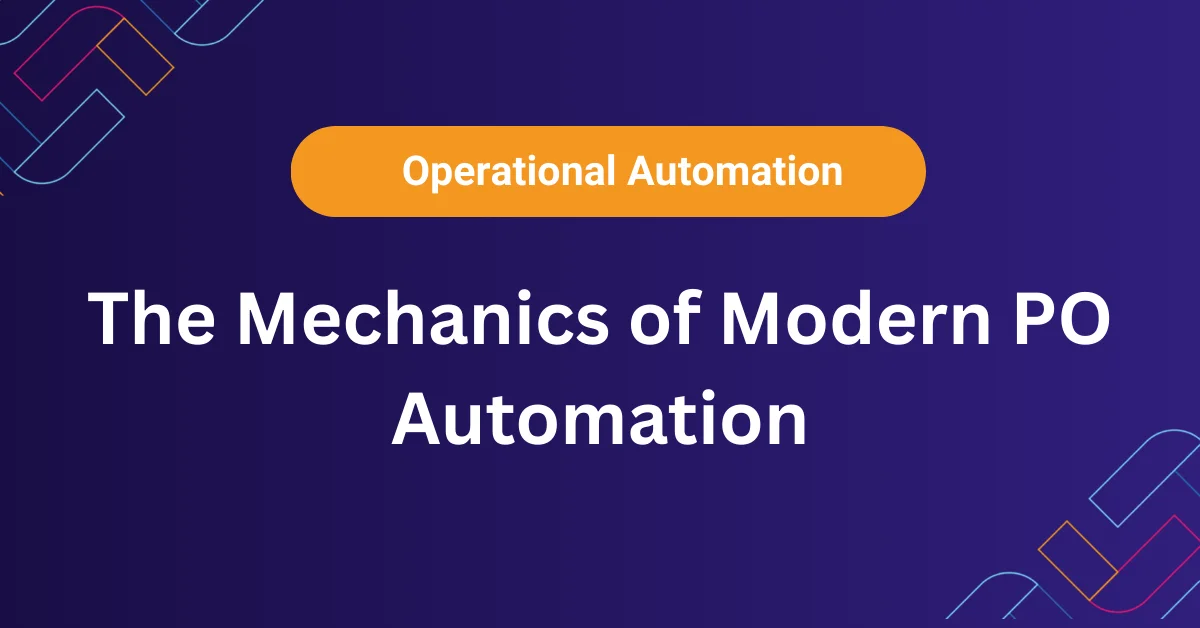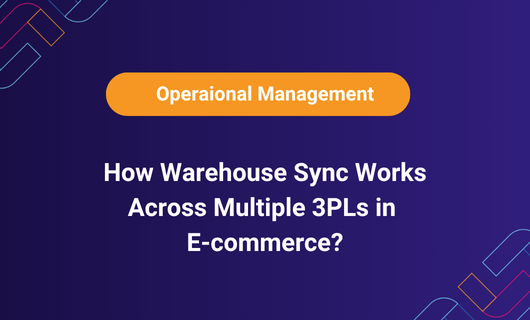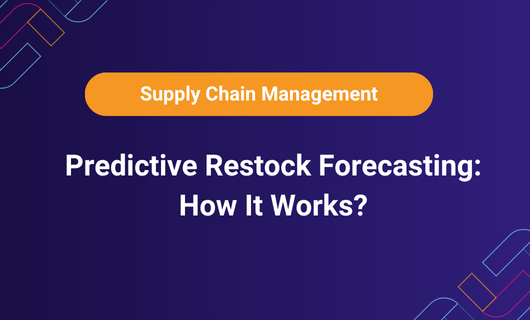You know the drill. The forecast says you need 500 units. You build a PO in Excel, check MOQs, and chase a manager for approval. You email the vendor. Then the confirmation comes back with a changed lead time. Now your replenishment plan is wrong, and a stockout looms. What if your system could generate perfect, policy-compliant POs with one click? With a supply chain control tower dashboard, you can monitor inventory, vendor lead times, and order status in real time—allowing you to focus on strategic supplier negotiations and demand planning instead. This isn’t a far-off dream. It’s purchase order automation, the force multiplier that top e-commerce brands use to protect margin and accelerate growth.
The Mechanics of Modern PO Automation
Moving from theory to a profit-protecting tool requires understanding how PO automation works in the real world. It is far more than sending an email. It’s an intelligent, rule-based engine that links your demand forecast directly to your supplier list. It enforces critical business policies at every step without human intervention.
This system acts as a digital supply chain manager, leveraging SAP Supply Chain Management to handle tedious, repetitive procurement tasks with flawless accuracy. Your human experts can then focus on strategic exceptions, supplier relationships, and negotiating better terms.
The core of this automation is the seamless integration of your data—forecasts, inventory levels, and supplier rules—with the software’s logic. This logic makes calculated, optimal decisions to keep inventory levels perfect, cash flow fluid, and operations scalable.

The Critical Data Needed for Automation
For PO automation to deliver hands-off success, it needs clean, accurate data. Think of this as defining the rules for your digital employee.
Core Data Requirements:
-
Accurate Demand Forecast: The primary trigger. This can come from your ERP, a dedicated planning tool, or reliable e-commerce platform reports.
-
Detailed Supplier Information: A database for each vendor containing:
-
Lead Time: The total days from order to receipt, used to calculate the precise reorder date.
-
Minimum Order Quantity (MOQ): The smallest amount a vendor will accept.
-
Your Internal Business Policies: Rules like target stock levels, approval workflows for large orders, and spending limits to maintain financial control.
-
How It Works: The software integrates with your systems, comparing forecasted demand against current stock and your predefined policies. When a product hits its reorder point, the system automatically creates a draft PO. It routes it for necessary approvals and sends it to the supplier via email, portal, or EDI—all without manual data entry. This level of automation, as explained in our value-chain-vs-supply-chain-ecommerce-usa guide, helps align purchasing with both operational efficiency and strategic supply chain goals.
Enforcing MOQ and Pack-Size Logic Automatically
This is where automation pays for itself. Manually calculating how to meet a vendor’s MOQ of 1000 units when you only need 800 is a time sink. Do you order 200 extra? Find a complementary product? Automation handles this instantly.
System Logic: The software calculates the optimal order quantity by rounding your forecasted need up to the nearest pack size or MOQ. It can also suggest bundling SKUs from the same vendor to meet minimums efficiently.
ROI Angle: This eliminates over-ordering just to hit a minimum, which directly improves your cash conversion cycle by reducing excess capital tied up in inventory.
Can you enforce MOQ and pack sizes automatically?
A robust PO automation system stores supplier-specific rules, including MOQ and pack size. The system calculates the exact order quantity to meet demand and vendor requirements and ensures the vendor accepts every PO.
Streamlining Approvals and Guarding Budgets
Financial control is non-negotiable. Automation doesn’t mean a free-for-all; it means smarter, faster governance.
Custom Workflows: You can set rules like “All POs over $5,000 require VP of Ops approval” or “All orders from new suppliers need CFO sign-off.” The system routes the PO to the right person via email or a centralized dashboard.
Budget Visibility: The system cross-references a PO against a departmental or category budget before sending it for approval, and it flags potential overages immediately.
The system handles approvals through customizable digital workflows. It automatically calculates the correct order quantity to satisfy both your forecasted demand and the vendor’s requirements, ensuring the vendor accepts every PO. The approver can then review the details and click “Approve” or “Reject” with comments, creating a clear audit trail.
What happens when prices change?
The system should reference a maintained database of agreed-upon costs with each supplier.
If the unit cost changes, the system flags the PO for review before finalizing, preventing cost overruns.
Automating Vendor Communication and ASNs
The process continues even after the system sends the PO. Automation extends into supplier collaboration.
Digital Sending: The system automatically sends POs via the vendor’s preferred method—email, branded portal, or EDI.
Advanced Shipping Notice (ASN) Digital Confirmations: Vendors can log into a portal to confirm the order, update expected ship dates, and upload ASNs. This data feeds directly back into your WMS/3PL, allowing for precise receiving and put-away planning.
Can vendors confirm ASN digitally?
Absolutely. Modern systems provide suppliers with secure login credentials to a vendor portal. Here, they can view all POs, confirm acceptance, update statuses, and digitally upload Advanced Shipping Notices (ASNs), eliminating email chaos and manual data entry on your receiving dock.
Which systems support PO automation?
True automation requires integration. Leading systems connect directly with major e-commerce platforms (Shopify, Magento), ERPs (Netsuite, SAP), warehouse management systems (WMS), and inventory planning tools. They often use APIs or EDI for seamless data flow with suppliers and 3PLs.
Managing Exceptions and Split Shipments
No supply chain is perfect. The mark of a great system is how it handles the unexpected.
-
Exception Handling: The system should flag any event that deviates from the plan—a vendor rejecting a PO, a lead time change, a forecast that updates drastically after a PO is sent. These are routed to a human for intervention.
-
Split Shipments: If a vendor can only fulfill part of an order now and the rest later, the system can automatically generate a follow-up PO for the remaining quantity, adjusting future demand plans accordingly.
What if the forecast changes?
If a significant demand forecast change occurs after a PO is generated but before it is confirmed or shipped, the system can be set to automatically place the PO on hold and alert a planner. This allows for the PO to be adjusted or canceled based on the new data, preventing overstocking.
How to manage split shipments?
The automation software can track partial fulfillments. When a vendor indicates a split shipment, the system logs the received quantity and can automatically generate a new PO for the backordered amount, adjusting its expected arrival date based on the updated promise from the supplier.
The Tangible Bottom-Line Impact
Moving from manual to automated PO processing isn’t just an efficiency play; it’s a fundamental financial strategy that directly impacts your bottom line.
Labor Savings: Reduce time spent on PO creation, management, and vendor communication by 80-90%. This reclaims dozens of hours per week for your operations team, freeing them to focus on high-value work like strategic sourcing and process improvement.
Stockout Prevention: By dynamically calculating reorder points based on real-time lead times and demand shifts, you can virtually eliminate costly stockouts. This protects your revenue, your customer relationships, and your brand reputation on marketplaces like Amazon, where out-of-stocks directly harm ranking.
Improved Cash Flow: Automation enforces optimized order quantities that respect MOQs and pack sizes without significant over-ordering. This means less capital is tied up in dead stock, freeing up significant cash to invest in growth initiatives like marketing or new product development.
Enhanced Scalability: The automated system that efficiently manages 100 SKUs and 5 vendors will work just as effortlessly for 10,000 SKUs and 50 vendors. This allows your business to scale rapidly without the need to add proportional operational headcount, controlling overhead costs.
You didn’t build a 7-9 figure brand by doing things manually. You’ve outgrown spreadsheets and email chains. The operational risk, financial waste, and massive opportunity cost of not automating your purchase order process grow larger with every passing quarter.
Frequently Asked Questions
PO automation software integrates with your inventory, sales, and planning data. It compares your forecasted demand against current stock and predefined policies (like MOQ and lead time). When a product hits its reorder point, the system automatically generates a draft PO, routes it for any required approvals, and sends it directly to the supplier via email, vendor portal, or EDI, all without manual data entry.
Yes, A robust PO automation system maintains a database of supplier-specific rules. It automatically calculates the correct order quantity that satisfies both your forecasted demand and the vendor's MOQ and pack size requirements, ensuring every PO is valid and won't be rejected upon submission.
Approvals are managed through customizable digital workflows. The system holds the PO at the draft stage and automatically notifies the required approver (e.g., a manager for orders over a certain amount). The approver can review the details and click "Approve" or "Reject" with comments, creating a clear and auditable trail.
If a significant forecast change occurs after a PO is generated but before it is confirmed or shipped, advanced systems can be configured to automatically place the PO on hold and immediately alert a planner. This allows the order to be adjusted or canceled based on the new data, preventing overstocking.
Ready to Transform Your Operations? Talk to an Expert
The operational risk, financial waste, and massive opportunity cost of not automating your purchase order process grow larger with every passing quarter. Stop letting manual processes constrain your growth and profitability. Schedule a free, no-obligation call with a Brankit supply chain expert today. We’ll analyze your current process and provide a customized path to full PO automation tailored to your business. Schedule a Call with a Supply Chain Expert.





